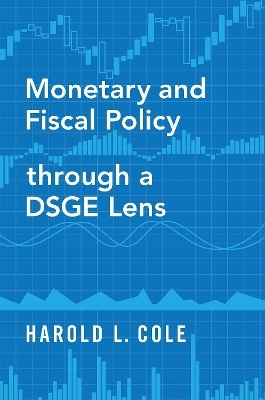
Monetary and Fiscal Policy through a DSGE Lens
Oxford University Press Inc (Verlag)
978-0-19-007603-0 (ISBN)
By using the simple DSGE, or dynamic stochastic general equilibrium, framework to build a series of quantitative models, the book combines a gradual introduction to advanced analytic methods with computer programming and quantitative policy analysis. In a clear discussion of the sophisticated interaction between theory and data, Cole explains how to gauge how well a model captures key elements in the data and how to reverse engineer a model to data. The book covers costs of inflation, optimal monetary policy, the impact of labor and capital taxes, and optimal fiscal policy. It systematically discusses technical material including the new Keynesian liquidity shock models, standard analytic methods, such as Lagrangian methods, and computational methods using Matlab and Python. With a strong computational emphasis, the volume teaches how to program up and solve systems of non-linear equations and develop models to study the macroeconomy.
Knowing how to deeply understand and analyze models and develop computational code to evaluate the implications of those models is essential for students of macroeconomics. This book connects the standard undergraduate material to the elaborate models of advanced graduate courses with systematic and logical coverage of the basics of advanced modern macroeconomics.
Harold L. Cole is Professor of Economics at the University of Pennsylvania and Editor of the International Economic Review. He is a Fellow of the Econometric Society and the Society for the Advancement of Theory. He is a research associate of the NBER.
Chapter 1. Introduction
Part 1. Money in a DSGE Model
Chapter 2. The Cash-in-Advance Model - First Step
Chapter 3. The Cash-in-Advance Model - Second Step
Chapter 4. Some Interesting Extensions
Chapter 5. The Cash-In-Advance Model - Third Step
Chapter 6. The Statistical Model
Chapter 7. Some History
Chapter 8. Measurement Error and Our Data
Chapter 9. Money Supply Rules and Interest Rate Rules
Chapter 10. Price-Setting and Information Frictions
Chapter 11. Ination, Output, and the Phillips Curve
Chapter 12. The Great Depression Through the Lens of Our Model
Chapter 13. Liquidity Effects and Interest Rates
Part 2. Capital and Fiscal Policy
Chapter 14. A Model of Money and Capital
Chapter 15. Taxes
Chapter 16. Taxes in Our Model: Take 1
Chapter 17. Taxes in Our Model: Take 2
Chapter 18. Modeling Government Expenditures
Part 3. Dynamic Models with Capital
Chapter 19. Dynamic Adjustment with Capital
Chapter 20. A Business Cycle Model with Capital
Chapter 21. Optimal Monetary and Fiscal Policy
Part 4. Reviews
Chapter 22. Math Reviews
Chapter 23. Python and Dynare Code
| Erscheinungsdatum | 03.01.2020 |
|---|---|
| Verlagsort | New York |
| Sprache | englisch |
| Maße | 241 x 159 mm |
| Gewicht | 666 g |
| Themenwelt | Mathematik / Informatik ► Informatik ► Theorie / Studium |
| Wirtschaft ► Volkswirtschaftslehre ► Finanzwissenschaft | |
| Wirtschaft ► Volkswirtschaftslehre ► Makroökonomie | |
| ISBN-10 | 0-19-007603-8 / 0190076038 |
| ISBN-13 | 978-0-19-007603-0 / 9780190076030 |
| Zustand | Neuware |
| Haben Sie eine Frage zum Produkt? |
aus dem Bereich


